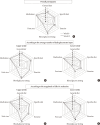Feasibility of a Patient-Centered, Smartphone-Based, Diabetes Care System: A Pilot Study
- PMID: 27098508
- PMCID: PMC4929223
- DOI: 10.4093/dmj.2016.40.3.192
Feasibility of a Patient-Centered, Smartphone-Based, Diabetes Care System: A Pilot Study
Abstract
Background: We developed a patient-centered, smartphone-based, diabetes care system (PSDCS). This study aims to test the feasibility of glycosylated hemoglobin (HbA1c) reduction with the PSDCS.
Methods: This study was a single-arm pilot study. The participants with type 2 diabetes mellitus were instructed to use the PSDCS, which integrates a Bluetooth-connected glucometer, digital food diary, and wearable physical activity monitoring device. The primary end point was the change in HbA1c from baseline after a 12-week intervention.
Results: Twenty-nine patients aged 53.9±9.1 years completed the study. HbA1c and fasting plasma glucose levels decreased significantly from baseline (7.7%±0.7% to 7.1%±0.6%, P<0.0001; 140.9±39.1 to 120.1±31.0 mg/dL, P=0.0088, respectively). The frequency of glucose monitoring correlated with the magnitude of HbA1c reduction (r=-0.57, P=0.0013). The components of the diabetes self-care activities, including diet, exercise, and glucose monitoring, were significantly improved, particularly in the upper tertile of HbA1c reduction. There were no severe adverse events during the intervention.
Conclusion: A 12-week application of the PSDCS to patients with inadequately controlled type 2 diabetes resulted in a significant HbA1c reduction with tolerable safety profiles; these findings require confirmation in a future randomized controlled trial.
Keywords: Delivery of health care; Diabetes mellitus; Smartphone.
Conflict of interest statement
Figures



Similar articles
-
A Mobile Health Intervention for Self-Management and Lifestyle Change for Persons With Type 2 Diabetes, Part 2: One-Year Results From the Norwegian Randomized Controlled Trial RENEWING HEALTH.JMIR Mhealth Uhealth. 2014 Dec 11;2(4):e57. doi: 10.2196/mhealth.3882. JMIR Mhealth Uhealth. 2014. PMID: 25499872 Free PMC article.
-
Humalog Mix 25 in patients with type 2 diabetes which do not achieve acceptable glycemic control with oral agents: results from a phase III, randomized, parallel study.Rom J Intern Med. 2003;41(2):153-62. Rom J Intern Med. 2003. PMID: 15526500 Clinical Trial.
-
The Effects of a Mobile Phone Application on Quality of Life in Patients With Type 1 Diabetes Mellitus: A Randomized Controlled Trial.J Diabetes Sci Technol. 2015 May 11;9(5):1086-91. doi: 10.1177/1932296815585871. J Diabetes Sci Technol. 2015. PMID: 25963412 Free PMC article. Clinical Trial.
-
Performance of the first combined smartwatch and smartphone diabetes diary application study.J Diabetes Sci Technol. 2015 May;9(3):556-63. doi: 10.1177/1932296814567708. Epub 2015 Jan 14. J Diabetes Sci Technol. 2015. PMID: 25591859 Free PMC article.
-
Is the frequency of self-monitoring of blood glucose related to long-term metabolic control? Multicenter analysis including 24,500 patients from 191 centers in Germany and Austria.Exp Clin Endocrinol Diabetes. 2006 Jul;114(7):384-8. doi: 10.1055/s-2006-924152. Exp Clin Endocrinol Diabetes. 2006. PMID: 16915542
Cited by
-
Analysis of Effectiveness and Psychological Techniques Implemented in mHealth Solutions for Middle-Aged and Elderly Adults with Type 2 Diabetes: A Narrative Review of the Literature.J Clin Med. 2021 Jun 18;10(12):2701. doi: 10.3390/jcm10122701. J Clin Med. 2021. PMID: 34207402 Free PMC article. Review.
-
Assessing the Acceptability and Effectiveness of Mobile-Based Physical Activity Interventions for Midlife Women During Menopause: Systematic Review of the Literature.JMIR Mhealth Uhealth. 2022 Dec 9;10(12):e40271. doi: 10.2196/40271. JMIR Mhealth Uhealth. 2022. PMID: 36485026 Free PMC article.
-
Diabetes clinic reinvented: will technology change the future of diabetes care?Ther Adv Endocrinol Metab. 2021 Mar 23;12:2042018821995368. doi: 10.1177/2042018821995368. eCollection 2021. Ther Adv Endocrinol Metab. 2021. PMID: 33854751 Free PMC article. Review.
-
Effect of Multimodal App-Based Interventions on Glycemic Control in Patients With Type 2 Diabetes: Systematic Review and Meta-Analysis.J Med Internet Res. 2025 Jan 24;27:e54324. doi: 10.2196/54324. J Med Internet Res. 2025. PMID: 39854703 Free PMC article.
-
User Retention and Engagement With a Mobile App Intervention to Support Self-Management in Australians With Type 1 or Type 2 Diabetes (My Care Hub): Mixed Methods Study.JMIR Mhealth Uhealth. 2020 Jun 11;8(6):e17802. doi: 10.2196/17802. JMIR Mhealth Uhealth. 2020. PMID: 32525491 Free PMC article.
References
-
- Cho NH, Whiting D, Guariguata L, Montoya PA, Forouhi N, Hambleton I, Li R, Majeed A, Mbanya JC, Motala A, Narayan KM, Ramachandran A, Rathmann W, Roglic G, Shaw J, Silink M, Williams DR, Zhang P. IDF diabetes atlas. 6th ed. Brussels: International Diabetes Federation; 2013.
-
- Bartlett EE. Historical glimpses of patient education in the United States. Patient Educ Couns. 1986;8:135–149. - PubMed
-
- Norris SL, Engelgau MM, Narayan KM. Effectiveness of self-management training in type 2 diabetes: a systematic review of randomized controlled trials. Diabetes Care. 2001;24:561–587. - PubMed
-
- Cleveringa FG, Gorter KJ, van den Donk M, van Gijsel J, Rutten GE. Computerized decision support systems in primary care for type 2 diabetes patients only improve patients' outcomes when combined with feedback on performance and case management: a systematic review. Diabetes Technol Ther. 2013;15:180–192. - PubMed
-
- Pal K, Eastwood SV, Michie S, Farmer A, Barnard ML, Peacock R, Wood B, Edwards P, Murray E. Computer-based interventions to improve self-management in adults with type 2 diabetes: a systematic review and meta-analysis. Diabetes Care. 2014;37:1759–1766. - PubMed
LinkOut - more resources
Full Text Sources
Other Literature Sources

